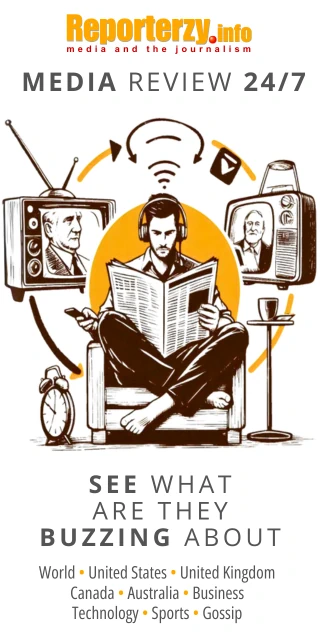Belgium
In Belgium, 95% of print journalists and 65% of audiovisual sector employees are members of the General Association of Professional Journalists, which has existed for over 100 years. The Association faces no competition or decline in membership despite Belgian journalists increasingly joining trade unions. However, this Association functions more like a professional union than a traditional association.
It is important to note that the title of “journalist” in Belgium is legally protected. Not just anyone can claim the title. The law defines who may use the title, requiring that journalists are paid by a news organization, such as a periodical, radio or TV news broadcaster, newsreel service, or press agency. In other words, a journalist is someone engaged in gathering and processing information. For instance, a TV presenter is not considered a journalist.
The decision to grant the title is made by a joint committee of publishers and journalists, and the Association administers the documentation. This connection brings journalists closer to the organization, whether or not they wish to be members.
Some regulations for earning the title are outdated, such as "not engaging in any commercial or advertising activity" or "having worked for at least two consecutive years without interruption." However, these provisions have been in place for over a century.
The latest rule presents a challenge for graduates who, by law, are not yet considered journalists and thus cannot work in media or obtain official documentation. The Association introduced a two-year internship rule that allows graduates to work in a newsroom; however, to become an intern, one must be a member of the Association.
The Association provides various services, including deontology, lobbying for press freedom, professional liability insurance, legal assistance with attorney fees, and negotiating collective employment contracts for journalists.
Canada
Canadian journalist associations generally divide along linguistic lines. There is the English-language Canadian Association of Journalists (CAJ) and the French-speaking Fédération professionnelle des journalistes du Québec (FPJQ). Both organizations aim to serve members in both languages, but in practice, CAJ operates primarily in English Canada, while FPJQ serves the French-speaking Quebec province.
CAJ - CAJ has 1,500 members: 60% work in print media, while the remainder are involved in electronic media, photojournalism, or are students and journalism teachers. However, this represents only about 15% of Canadian journalists. Established in 1978 by Jean-Claude Leclerc of the Quebec newspaper *Devoir*, the organization initially aimed to break the isolation of investigative journalists (those involved in criminal affairs) and was originally called the Center for Investigative Journalism. It was renamed to CAJ in 1996.
The goals and services offered by CAJ are similar to those of FPJQ: information, training, setting positions, and prices. It faces similar challenges: low membership rates, insufficient funds, and lack of staff, with only one full-time employee, Secretary General John Dickson.
CAJ faces a unique lack of group solidarity, with each member focusing on personal gain. It attracts mainly younger journalists interested in training opportunities. Low membership dues also contribute to its funding issues: $75 for those earning over $30,000 annually and $40 for others. CAJ also relies on advertising income but has yet to find effective solutions to improve its financial standing.
FPJQ - Although only operating within the French-speaking community, FPJQ is much more dynamic. It has nearly 1,500 members, representing 40% of Quebec’s journalists. The majority (41%) work at Radio-Canada or in *La Presse* (17%), while others work primarily in print, with a few in TV. Its annual budget is $260,000, and it employs two full-time staff members.
FPJQ was established in 1969, emerging from the Canadian Union of French-Language Journalists with only 70 members. By the early 1980s, FPJQ had 1,000 members, and the 1990s were its best years of growth. Annual membership fees are $70 for students or those earning less than $25,000 and $135 for others. In return, members receive a monthly magazine "Le 30," a press card, access to insurance programs, paid training, scholarships, awards for top publications, and the best auto and home insurance plans, among other benefits.
Switzerland
In Switzerland, the journalism profession is considered "open." As a result, anyone working in Swiss media - whether a dentist, mechanic, or butcher - can claim the title of journalist.
However, the press card is a different matter, controlled by the Swiss Professional Journalists Register (Registre professionnel suisse des journalistes). The issuance of this "passport" for press conferences, free museum visits in Europe, and other financial advantages is the result of a complex administrative process, sometimes daunting for newcomers. This system was established by the Swiss Journalists Federation, Swiss Mass Communication Association, and Swiss Journalists Union, which together formed the Register.
Generally, to qualify for a card, a journalist must prove they work for or regularly collaborate with a recognized media outlet. The Register excludes publications tied to government, private organizations, or production companies. The rules allow exceptions in certain cases (for instance, employees of the *Migros* company may have a card, but student newspaper *Campus* journalists may not).
Work in a recognized publication (like *Tribune*, *Matin*, *Temps*, or television) is only the first step. A journalist must show that 80% of their income comes from journalism and that they earn at least 28,000 Swiss francs per year, though exceptions are made for justified cases.

Any journalist, whether they have a card or not, can belong to the Swiss Journalists Union (SZD). The SZD has around 6,000 members from Switzerland and Liechtenstein, representing 90% of all journalists. Its popularity is driven by numerous benefits, including legal protection, a health insurance program, a retirement fund for freelancers, training, and an emergency relief fund.
SZD members also receive major discounts on various airlines (Air France, American Airlines, British Airways, Malaysia Airlines), car rentals, photography equipment, magazine subscriptions, and free parking at Geneva Airport - all for an annual fee of 300 to 500 Swiss francs.
USA
The USA has around 35 journalistic organizations with 120,000 members, including some niche associations like the National Lesbian and Gay Journalists Association, the American Agricultural Publishers Association, and the Philadelphia Association of Black Journalists.
The most prominent group is the Society of Professional Journalists (SPJ), which has the most members and operates across the nation. It is also the oldest American journalism organization, established in 1905, and has provided a code of ethics for journalists since 1926 (revised in 1987 and updated in 1996). SPJ employs 12 people.
The SPJ has 9,000 members, mostly from print media. Assistant Director Julie Grimes is unable to specify exact membership figures by media type. Two thousand members are journalism students (nearly 20%). Most members are early-career journalists with only a few years of experience.
Financially, SPJ is on stable footing: the main revenue source is membership dues ($70 for working journalists and $40 for students). SPJ also organizes fundraising campaigns, with an annual budget of $1.7 billion.
SPJ offers its members similar benefits to Canadian associations but also has a legal aid fund. Although limited and awarded only after reviewing documents, the aid takes considerable time to process.
SPJ’s main issue, however, is declining membership: in 1995, it had 30,000 members, meaning two-thirds have left in six years. This decline is likely due to the rise of new journalism organizations, increasing individualism among journalists, and SPJ’s waning monopoly on training.
SPJ was, for years, the sole journalism organization in the USA. Its goals remain broad (press freedom, journalistic ethics), whereas newer organizations address specific issues, such as agricultural journalism or specialized publications (e.g., the press for LGBTQ+, African-American advocates).
SPJ attracts members less interested in shared objectives. The increasing individualism of journalists is likely the main reason behind SPJ’s decline.
Training has also escaped SPJ’s priority control as more courses are held in workplaces. Other issues (recently debated also in Canada) include the right to protect personal notes from police confiscation and access to government documents, particularly restricted after September 11.
COMMERCIAL BREAK
New articles in section Media industry
Journalism in the age of AI. Why people prefer humans over machines
Krzysztof Fiedorek
Only 12% of people accept news created solely by AI, while 62% prefer those written by humans. At the same time, only 19% notice labels indicating the use of artificial intelligence, while younger audiences ask AI to explain the content to them. These are the findings of the Reuters Institute report on artificial intelligence in media.
Why do we believe fakes? Science reveals the psychology of virals
KFi
Why do emotions grab more attention than evidence, and why can a fake authority overshadow scientific data? Researchers from Warsaw University of Technology, Jagiellonian University, and SWPS University in Poland sought the answers. Here are their findings.
Investigative journalism in Europe. Newsrooms face pressure
KFi, Newseria
Media and political representatives point to the difficult situation of investigative journalism in Europe. Newsrooms are reluctant to invest in this segment due to high costs and the large amount of time and effort required. Most of all, however, they fear legal proceedings.
See articles on a similar topic:
Automation of Disinformation. Global Risks Report 2025 and Media
Krzysztof Fiedorek
Disinformation and information manipulation have ranked first among global threats in both the two-year and ten-year perspectives. A particularly concerning factor is that social media algorithms often favor controversial or shocking content, further fueling disinformation.
Algorithmic personalization study. Who and how understands digital media
KFi
Most internet users believe that everyone sees the same content online. Meanwhile, algorithms personalize messages so effectively that a young woman with higher education receives different information than her father. Researchers reveal who truly understands the mechanisms.
Disinformation and Fake News. Experts Discuss Challenges for Journalists
RINF
The pandemic, followed by the war in Ukraine, triggered a massive wave of disinformation in media and social channels. Experts at the Impact’22 Congress in Poznań and the European Economic Congress in Katowice discussed effective strategies to combat disinformation.
Artificial Intelligence and Digital Skills. The Future of the Job Market is Here
KFi
The world faces the challenge of digital transformation, and technological skills have become a gateway to career success. How do Europeans evaluate their abilities, and which industries are leading the way? A recent report by Pracuj.pl reveals which skills open doors to better careers and why AI is the future of work.






























